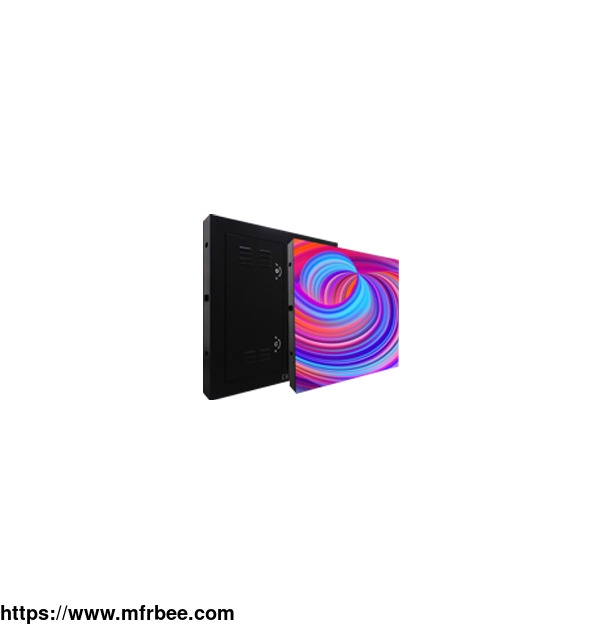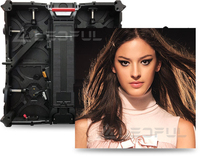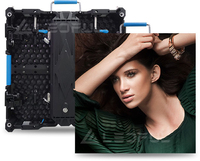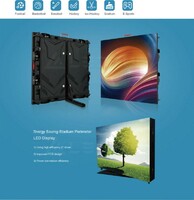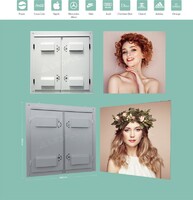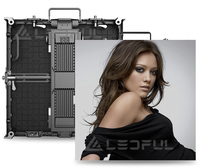LED Display Screen Types
Specifications
LED Display Screen Types
Outdoor Commercial LED Display
Fixed in one place permanently, IP65 protection level to withstand all weather conditions, outdoor commercial display is usually used for building top/ facade, gas station, hospital, hotel,
shopping mall, roadside billboard, etc.
Indoor HD LED Screen
High Definition & High Grey Scale & Bright Colors, mainly used for mall, retail store, church, airport, conference room, etc.
Glass Transparent LED Screen
3000~10000nits high brightness, 70% perfect transtrancy, transparent LED screen usually be used for outdoor building facades, indoor glass windows of clothing shop, jewelry store, car shop, museum,
shopping mall, etc.
Stadium LED Screen Perimeter System
0°~90° adjustable view angle, die casting aluminum cabinets, perimeter LED screen mainly be used for various stadium like basketball, football, hockey, beach volleyball, baseball, E-sports, etc.
Fancy Advertising LED Poster
Easy operation plug and play, various designs, used for outdoor kiosk, sidewalk, indoor restaurant, clothing shop, guidance display, airport adverting, etc.
Indoor Flexible LED Design
Customized, concave, convex, round, column, S shaped, cylinder, various flexible LED screen design by flexible LED screen, usually be used for indoor shopping mall, hospital, expo, school, company,
bank, etc.
Stage Background Rental LED Screen
One-stop stage rental LED display solution, 4th generation last technology, used for various events like wedding, concert, wine party, expo, feast, festival, etc.
Interactive Floor LED Screen
High sensitivity, strong bear ability 2T/sqm, all waterproof surface, mainly be used for wine bar, shopping mall, auto show, play ground, park, etc.
Advantages of LED Displays Compared with LCD Screen
How to choose the most suitable display product for you? This is a common question often encountered when picking out products. LED or LCD? One of the most obvious differences between the two
products is the presence or absence of a backlight.
LED stands for Light Emitting Diode, while LCD is short for Liquid Crystal Display. The difference between the two is the location and type of lights used. LEDs use diodes, while LCDs use
fluorescent lights. LEDs are also slimmer than LCDs, providing higher quality, sharper images and HD output.
There are two basic reasons why LED TVs provide a better picture. First, LED TVs work with a color wheel or unique RGB color lights (red, green, blue) to produce more lifelike, clearer colors.
Second, LEDs can be dimmed. The dimming feature of the backlight in LED TVs makes the picture appear in truer blacks by dimming the lights and blocking more light from passing through the panel.
Edge-lit LED TVs do not have this feature; however, edge-lit LED TVs can display a truer white than fluorescent LED TVs.
For LED display, it has many advantages compared with LCD.
Higher brightness
The brightness of the LED display is significantly higher than that of the LCD display. Images and videos are clearly displayed even in direct sunlight, while the LCD display cannot display
properly under the influence of ambient light.
The screen brightness level of the LED can be adjusted according to the ambient light. Brightness varies from a few hundred to a few thousand.
Wider viewing angle
To ensure that people can see the image clearly from different angles. The LED display ensures a wider viewing angle, up to 160°. And with LCD monitors, the viewing angle is more limited and
narrower.
High contrast
The contrast ratio of the LED screen is much higher than that of the LCD screen, and the high contrast ratio can ensure the visibility under different conditions. For example, commercial LED
screens can greatly display picture details whether indoors or outdoors with strong sunlight during the day.
Energy consumption
The power consumption ratio of LCD and LED screen is about 10:1. Lower power consumption can help users save money and extend service life. LED TVs are more efficient and consume less power. They
can also work with low power sources and are compatible with generators and solar panels, making them 20 to 30 percent more energy efficient than LCD TVs.
Customized size and shape
Due to manufacturing process limitations, LCD screens cannot be easily customized to size. For LED, its unique manufacturing process is convenient for customizing the size and shape.
For example, LED cabinets can be installed as LED TV walls (referring to large-sized display screens), which can theoretically be infinitely large. This feature allows LED screens to appear
seamlessly and without borders, while LCD screens inevitably have borders on the surface and cannot achieve large displays.
Service life
Commercial LED screens have a much longer lifespan than LCDs. Basically, the lifespan of commercial LED screens can reach 50,000 hours, while the lifespan of LCD screens can only reach 30,000
hours, which is only 60% of that of LED screens. In the same usage scenario, if you use them 10 hours a day, the working life will be 15 years and 8 years respectively.
